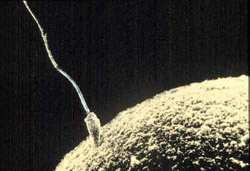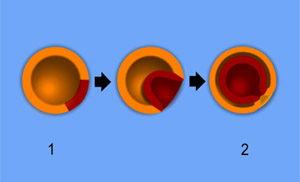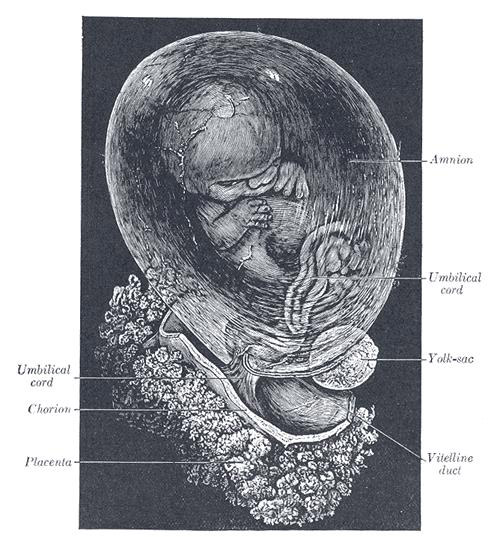 username@email.com
username@email.com
In this lesson, you will review embryonic development.

Pregnancy refers to the entire process of embryonic development. A pregnant placental mammal is carrying one or more developing embryos in the uterus. Pregnancy is preceded by conception, the moment when a sperm cell penetrates an egg cell, or ovum. This fertilization usually occurs in the oviduct. Chemical changes within the fertilized egg quickly block entry by other sperm.
The resulting zygote immediately begins rapid division by cleavage—first into two cells, then four, then eight, doubling the number of cells every few minutes. In three or four days, when the zygote has become a ball of cells, it reaches the uterus. Once implanted in the endometrium, the zygote becomes the embryo.
After cleavage has produced 128 cells, blastulation begins and the embryo becomes a blastula—a hollow sphere of cells. Blastulation in mammals leads to the formation of the blastocyst. The outer layer of cells on the blastocyst will mingle with the cells of the inner layer of the uterine wall and become the placenta. It is through this special organ that the developing embryo receives nutrients, exchanges gases, and disposes wastes. The amniotic sac also develops at this time. This sac forms from two thin membranes, the chorion and the amnion, and contains amniotic fluid. This fluid maintains a constant temperature and absorbs shock from movements.

A hollow sphere of cells during embryonic development is called a
The correct answer is D. A zygote is a cell resulting from fertilization. The amniotic sac consists of two membranes that hold the embryo, then fetus. An ovum is an egg—a female sex cell or gamete.

1—Blastula. 2—Gastrula. Ectoderm is orange; endoderm is red.
The next stage of embryogenesis is gastrulation. During gastrulation the embryo’s morphology undergoes restructuring by cell migration. Depending on the organism, the cells migrate to form two or three germ layers. In diploblastic organisms, the ovum gives rise to two germ layers: ectoderm and endoderm. In triploblastic organisms, the ovum gives rise to three germ layers: ectoderm, endoderm, and mesoderm. The ectoderm layer forms the epidermis and nervous system. The endoderm layer forms the gastrointestinal tract, respiratory tract, and endocrine glands. The mesoderm layer forms the muscles, connective tissue, bones, and many of the organs.
After the definition of these germ layers, organ systems begin to develop. This is called organogenesis. Beyond organogenesis, there seems to be no common pattern among the different taxa.
At the end of the first trimester, the embryo becomes known as the fetus. During the second trimester, the vertebrate fetus grows very rapidly and becomes very active. The mother may feel the fetus moving and movements may be visible through the abdominal wall. During the third trimester, the fetus grows even more rapidly. Fetal activity may actually decrease as the fetus fills all the available space and positions itself for birth.

The cells in the various layers appear to be similar, but probes for cell-specific proteins reveal that different groups of cells have already started on specific paths of future development. However, since all of the cells contain the exact same set of genetic information, what causes differentiation?

Pregnancy represents an immunological conundrum. Why does the mother’s body not automatically reject this obviously foreign body? The explanation is unclear, but the best hypothesis seems to be that paternal antigens are created. The mother’s white blood cells react to these antigens and start to prepare an immune response. This in turn triggers the production of a special suppressor white cell in the uterus that prevents the other white blood cells from mounting an attack. According to this hypothesis, if the initial immune response is weak, then no suppressor white cells are made. As a result, the continued attack by the mother’s white cells, while weak, may eventually trigger a spontaneous abortion. This may account for women who have multiple miscarriages for no apparent reason.
During which trimester does organogenesis occur?
A is the correct answer. The first trimester is characterized by development of rudimentary forms of all adult structures. Choice B is the trimester of growth. Choice C is the trimester of rapid growth. Choice D is incorrect because there is no fourth trimester.